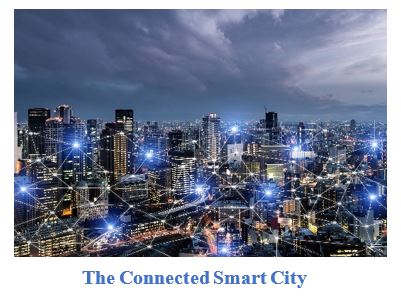

With the rapid advance in information and communications technology (ICT) over the last decade, we have seen an increasing crossover in the application of this new technology. Most notably in the performance and interactivity of urban services. This has become commonly referred to as “Smart Cities”. In combination with the Internet of Things (IoT), sensors, and other devices, smart cities collect information about a particular space, then use this data to manage assets and resources efficiently.

There are 3 main purposes for the collection and communication of all this data: presenting, perfecting, and predicting. This allows for the analysis of data that can inform humans and machines in making more intelligent choices. Without these 3 things, data becomes unable to better inform future decision making and real-time response.
This decade will bring many new and unique challenges. Over the next 10 years, it’s predicted that over 700 million people will be added to our urban areas worldwide. With this great influx of people comes new stressors on municipalities. New environmental and regulatory requirements paired with increased costs and a declining tax base are huge factors. Also adding to this strain is the inadequate infrastructure of most cities built for populations a fraction of their current size.
With new technology we have been able to more accurately measure the lasting impact that humans are having on the environment. Currently carbon emissions from cities create three-fourths of the worlds CO2 emissions while housing only half of the world’s total population and using two-thirds of the world’s energy. With this awareness comes rising expectations for cities to make real changes to their carbon footprint. This in part is being met by the shift to smart city technologies. Where there are problems people demand solutions, and these new green initiatives are positive drivers in the future development of more efficient technology, thus dramatically impacting future costs and energy usage.
The rapid development of smart city technology needs a firm foundation. Cities already with a substantial amount of preexisting infrastructure are now helping create a firm foundation for some new technology. However, in many cases the applications of new smart city technology can be hindered by the often inefficient existing structure of a city. In many cases, smart city technology is multi-faceted and requires city departments to work interactively, which is usually not the case. Many projects are built to solve a single problem in a single department, creating “islands of automation” resulting in duplicate expenses while making it difficult to share systems or data. Exacerbating these issues is a lack of capital and financing. Tax revenues are declining in many areas making infrastructure projects increasingly difficult to deliver. Fortunately, new financial models are emerging that enable cities to circumvent these issues in the future. With these problems also come the issue of lack of information and communication technology (ICT) domain expertise. Through private partners, many of whom specialize in public-private partnerships, this problem in some cases can be solved.
Smart city technology offers cities major benefits in key areas, like safety, security, and energy consumption. For instance, information collected from sensors result in reduced energy consumption, thus cleaner air and water, and less expensive energy for city inhabitants. This fosters a better general lifestyle as well as enhancing work and educational environments. It can breathe new life into cities, creating convenient mass transit, good schools, and faster emergency responses, all fostering a comfortable, clean, healthy, and safe lifestyle. Enhancing workability helps to speed economic development – more jobs, better jobs & increased local revenue. Access to services that help residents become competitive economically on a global stage include Broadband connectivity, educational opportunities, affordable housing, and efficient cost-effective modes of transportation. tailored to both community and city infrastructure in ever evolving modern cities. This adds to enhanced sustainability that does not compromise future generations.

